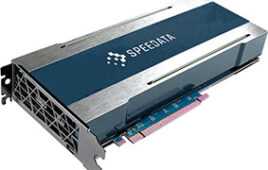NREL Fellow Honored for ‘Chemistry in the Public Interest’
Dr. Arthur J. Nozik, senior research fellow at the U.S. Department of Energy’s National Renewable Energy Laboratory (NREL), will be awarded the Gustavus John Esselen Award for Chemistry in the Public Interest, from the American Chemical Society’s Northeastern Section at Harvard University on April 14.
The Gustavus John Esselen Award for Chemistry in the Public Interest honors outstanding scientific achievement in scientific and technical work that contributes to the public well-being and has communicated positive values of the chemical profession. Nozik’s award cited his innovative solar research, including the exploration of future generation concepts for lower cost and more efficient solar conversion.
“Dr. Nozik through his groundbreaking solar research work, is pioneering technologies that have, and will continue to have, a long-term impact on how people create energy in clean and affordable ways,” Deputy Laboratory Director for Science and Technology Dana Christensen said.
Dr. Nozik is also professor adjoint in the Department of Chemistry and Biochemistry at the University of Colorado Boulder, and a fellow of the NREL/University of Colorado Renewable and Sustainable Energy Institute.
Beginning in the mid 1970s, Dr. Nozik and his colleagues identified processes in solar cells, called hot carrier conversion, that could increase solar conversion efficiency by using more of the sun’s energy to produce electricity or fuel; when today’s solar cells absorb a photon of sunlight, about 50 percent of the energy is lost as heat. In 2000, Nozik identified another process using hot carriers wherein semiconductor nanocrystals called quantum dots could increase the efficiency of solar cells, through a process now termed multiple exciton generation, or MEG. Dr. Nozik’s team at NREL, along with researchers at Los Alamos National Laboratory led by Dr. Victor Klimov, experimentally confirmed the MEG process in 2004-2005.
In 2010, Dr. Nozik and his colleagues at CU-Boulder (Professor Josef Michl) and NREL (Dr. Justin Johnson), reported the first designed molecular system that produces two triplet states from an excited singlet state of a molecule, with essentially perfect efficiency. This process is called singlet fission and is the molecular analog of MEG. This breakthrough could lead to a 35 percent increase in light-harvesting yield in cells for photovoltaics and solar fuels. These two new processes are now termed next generation (or sometimes third generation) solar photon conversion.
Dr. Nozik will receive the Esselen Award and give the award lecture on April 14 in a ceremony at Harvard University’s Mallinckrodt Chemistry Laboratories, Cambridge, Mass., at 8:15 p.m. After the awards ceremony, Dr. Nozik will give a presentation on “Prospects and Novel Approaches for the Low Cost Power Conversion of Solar Photons to Electricity and Solar Fuels.”
Dr. Nozik has published more than 250 papers and book chapters on basic research in photoelectrochemistry, solid state physics, semiconductor nanoscience, and related interdisciplinary science and holds 11 U.S. patents. He has served on numerous scientific review and advisory panels and received several awards in solar energy research. Dr. Nozik has been a senior editor of The Journal of Physical Chemistry since 1993. He is a fellow of the American Physical Society and the American Association for the Advancement of Science, and a member of the American Chemical Society, the Electrochemical Society, the American Association for the Advancement of Science, the Materials Research Society, and the Society of Photo Optical Instrument Engineers.
NREL is the Department of Energy’s primary national laboratory for renewable energy and energy efficiency research and development. NREL is operated for DOE by The Alliance for Sustainable Energy, LLC.
###
Visit NREL online at www.nrel.gov




